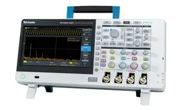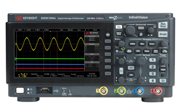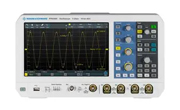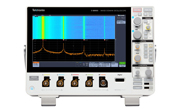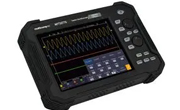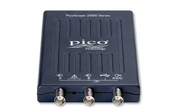Digital storage oscilloscopes (DSOs) are a marked improvement over traditional analog oscilloscope. However, conventional DSOs need help to capture and analyze fast, complex signals in modern electronic systems due to bandwidth constraints, limited sample rates, and shallow memory.
Next-generation DSOs have overcome these challenges with state-of-the-art technology and exceptional capabilities. These instruments revolutionize signal analysis, effectively addressing the limitations of older models and fostering innovation across various industries.
The limitations of traditional DSO waveform analysis
While conventional DSOs have been essential for signal analysis, they face several limitations as technology advances:
- Bandwidth Constraints: Traditional DSOs typically have limited bandwidth, ranging from a few megahertz to a few hundred megahertz. This makes it difficult for them to accurately capture high-frequency signals, which is common in modern digital circuits, RF communications, and advanced electronics. Limited bandwidth can result in signal attenuation and loss of critical details, leading to inaccurate analysis.
- Restricted Memory Buffer: A DSO's memory depth how much data it can store is crucial for effective signal capture and analysis. Traditional DSOs often have limited memory depth, restricting their ability to capture long, high-resolution signals. This forces users to choose between capture length and sample rate, potentially missing important anomalies or transient events in extended signals. For example, zooming in on the colour burst signal with a small buffer memory may lack detail, whereas a larger buffer provides a clearer, more detailed view.
- Trigger Limitations: Traditional DSOs use basic voltage-level triggering to start the horizontal sweep based on predefined voltage thresholds. However, this method can struggle with complex waveforms, such as those with asynchronous pulses or multiple crossings within a single period, leading to unstable or jittery displays. Digital scopes offer basic trigger options like source, level, slope, and pre/post trigger, but they vary in advanced functions. For digital signals, pulse triggers are helpful, and automatic save options help track intermittent faults. Application-specific triggers, such as those for disk drive testing, may come as paid extras but may be included for free with vendor negotiation.
- Connectivity Constraints: A lot of traditional digital storage oscilloscopes (DSOs) lack strong networking capabilities, which hinders their integration with modern test ecosystems. Due to insufficient LAN, USB, or Wi-Fi connectivity, these scopes face challenges in enabling remote operation, smooth data transfer, and real-time collaboration—features that are crucial in today's fast-paced engineering environments.
The need for Next-Generation DSOs
To meet modern electronic demands and overcome the limitations of traditional DSOs, next-gen DSOs are essential. These advanced instruments address previous shortcomings with the following features:
- Enhanced Bandwidth and Sampling Rates: Next-gen DSOs offer higher bandwidths in the gigahertz range and improved sampling rates, enabling the accurate capture of high-frequency signals.
- Increased Memory Depth: Greater memory depth allows for long-duration signal captures without sacrificing resolution.
- Sophisticated Triggering Mechanisms: Advanced triggers such as edge, pulse width, and logic triggers provide precise event isolation, even in noisy environments.
- Advanced Analysis and Automated Measurement: Comprehensive analysis tools and automated measurements reduce manual effort and increase accuracy.
- Enhanced Connectivity and Integration: Modern connectivity options (USB, LAN, Wi-Fi) support remote monitoring, data sharing, and seamless integration with other systems.
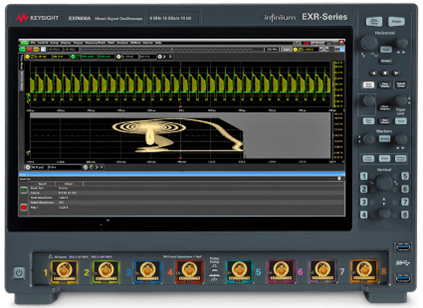
Figure 1: Next-Gen Digital Storage Oscilloscope from Keysight, Infiniium EXR Series, 8 Channel, 6 GHz, 16 GSPS, 100 Mpts, 71.7 ps (Source)
Unique and advanced features
Next-Generation oscilloscopes have evolved to offer unprecedented capabilities, from enhanced bandwidth and advanced sampling rates to multi-domain analysis and intuitive user interfaces. Unique features and advantages include:
Higher Bandwidth: Oscilloscope bandwidth is vital for accurate signal measurements, as it defines the highest frequency the device can reliably record. This is measured at the -3 dB point, where the signal drops to 70.7% of its original value. Insufficient bandwidth distorts waveforms and loses high-frequency details. The "5 Times Rule" ensures less than ±2% error by requiring the oscilloscope’s bandwidth to be at least five times the signal frequency.
Recent advancements have pushed bandwidth beyond 8 GHz. This is achieved through meticulous design and specialized technology such as Silicon-Germanium (Si-Ge) circuits, which maintain a flat frequency response and reduce out-of-band noise. Advanced digital filtering and high-speed DRAM enhance bandwidth, improving timing and jitter precision for reliable signal analysis. Bandwidth limit circuits reduce noise for cleaner displays but may cut high-frequency content. Some oscilloscopes use DSP filters to enhance bandwidth, flatten frequency response, improve phase linearity, and decrease rise time, ensuring unmatched signal fidelity and measurement accuracy.
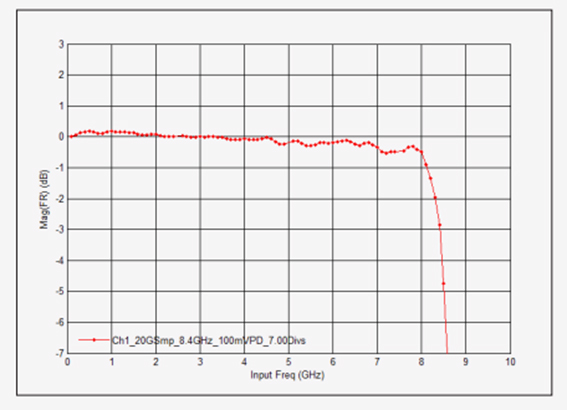
Figure 2: The response is very flat in the pass band and rolls off quickly above 8 GHz to preserve a low noise floor. (Source)
Advanced Sampling Rates: Modern advanced DSOs have significantly improved their sampling rates, leading to higher accuracy in signal capture. These devices use Digital Real-Time (DRT) Sampling Technology to capture waveforms in a single acquisition, preserving total bandwidth and intricate signal details. This is a significant improvement over Equivalent-time (ET) Sampling, which often misses critical transient events.
With sampling rates up to 10 GS/s on all channels, modern oscilloscopes effectively reduce aliasing and improve fidelity for non-repetitive and single-shot signals. High-speed DRAM enables rapid data processing, while advanced digital filtering minimizes noise and distortion. These improvements allow engineers to precisely capture fast, dynamic signal changes, ensuring accurate timing, jitter measurements, and reliable signal analysis in today's fast-evolving electronic systems.
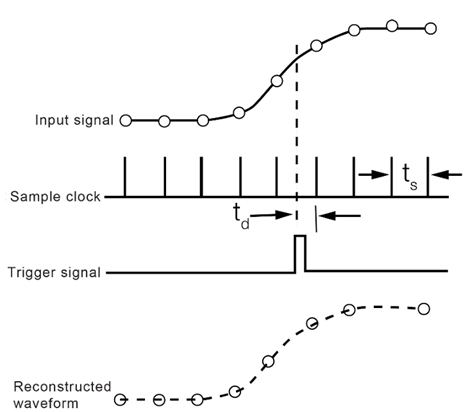
Figure 3: The advanced oscilloscope sequentially captures, digitizes, and stores discrete amplitude values of the input signal at regular intervals (Source)
Enhanced Resolution and Precision: DSOs capture signals in real-time using high-sample-rate ADCs but cannot initially display varying trace intensities. Modern Digital Phosphor Oscilloscopes (DPOs) improve upon DSOs by reintroducing trace intensity to represent the signal frequency of occurrence.
Advanced DSOs, such as MulticomPro’s Dual Channel and Quad Channel Digital Ultra Phosphor Storage Oscilloscopes, use this technology to deliver high-quality trace-intensity modulation. They feature fast update rates and deep memory, enabling superior waveform rendering. DPOs, with their ultra phosphor technology, significantly boost signal clarity and make waveform details more visible. This makes detecting subtle variations and noise that standard DSOs often miss easier, providing a superior visual representation of waveforms.
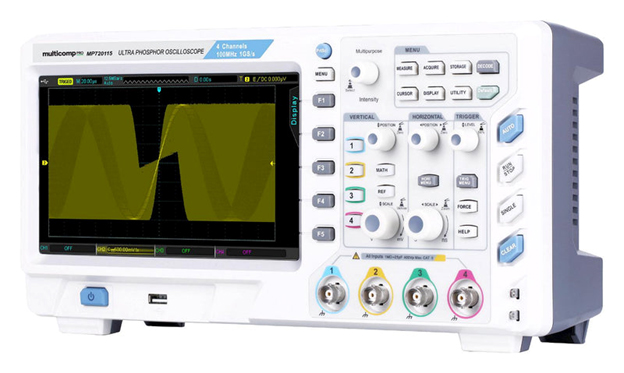
Figure 4: MULTICOMP PRO MP720115 Ultra Digital Phosphor Oscilloscope (Source)
- High Memory Depth: Oscilloscope memory depth, defined as the maximum record length for one acquisition, is essential for maintaining high sample rates over more extended periods, ensuring accurate and reliable measurements without missing important signal events. A larger memory depth allows for capturing and storing more waveform data, essential for analyzing complex or intermittent signals, capturing rare events, and conducting in-depth analysis and troubleshooting. Oscilloscopes with a memory depth of 62.5 Mpts (memory depth) per channel provide superior storage capabilities, allowing for detailed and extended signal capture. This provides significantly more capture time at high sample rates than conventional oscilloscopes with lower memory depths. This advanced memory capacity is beneficial for analyzing complex signals over long periods.
- Advanced Triggering and Search Capabilities: Modern digital storage oscilloscopes have advanced beyond traditional level-triggering methods by incorporating sophisticated features like the Pinpoint trigger system. This system offers highly selectable controls based on amplitude, time, or logic state, allowing for detecting specified conditions, such as narrow pulses, that traditional edge triggers often miss. Techniques like associative memory and weighted hamming distance (WHD) further enhance triggering by capturing and comparing waveform patterns in real-time, providing stable triggers even in noisy environments. These advancements minimize user intervention and improve the oscilloscope's utility in complex signal analysis tasks, simplifying troubleshooting and making the device more versatile. Specific trigger types include:
- Glitch Triggering: Captures glitches down to 150 ps wide.
- Width Triggering: Isolates pulses within specified time limits, helpful in observing inter-symbol interference.
- Runt Triggering: Detects pulses between defined amplitude thresholds, capturing meta-stable conditions.
- Timeout Triggering: Triggers on high or low events for a specified time.
- Transition Time Triggering: Identifies edges slower or faster than a specified time.
- Setup-and-Hold Triggering: Traps violations in synchronous data signals.
- Window Triggering: Captures bus contentions by triggering events that enter or exit a user-defined window.
These advanced trigger types and controls enable precise event isolation, enhancing the oscilloscope's utility in complex signal analysis.
Multi-Domain Analysis: Modern oscilloscopes, like Mixed Domain Oscilloscope (MDO), support multi-domain analysis, allowing engineers to work across time, frequency, and protocol domains. An MDO integrates an RF spectrum analyzer with an MSO or a DPO, enabling smooth analysis across digital, analog, and RF signals. This capability allows engineers to view time-correlated displays of protocol, state logic, analog, and RF signals within embedded designs, significantly reducing measurement uncertainty and speeding up troubleshooting.
MDOs are essential tools for debugging complex systems involving diverse signal types. Unlike traditional DSOs, they offer comprehensive domain analysis, real-time monitoring, advanced triggering options, and enhanced display capabilities, making them indispensable for tackling modern engineering challenges.
Key benefits of MDOs are:
- Comprehensive Domain Analysis: MDOs simultaneously monitor time and frequency domains, which is crucial for understanding complex timing and frequency relationships in modern circuits.
- Reduced Number of Tools Needed: By combining the functions of an oscilloscope and spectrum analyzer, MDOs reduce clutter and streamline workflows for efficient analysis.
- Real-time Monitoring: Extending real-time monitoring to the frequency domain accelerates troubleshooting and fine-tuning, essential for high-reliability projects.
- Advanced Triggering Options: MDOs provide advanced triggering across both domains, speeding up debugging and improving the accuracy of problem identification.
In Figure 5, the display showcases a time-correlated view that includes all relevant domains, including protocol (digital), analog, and RF.
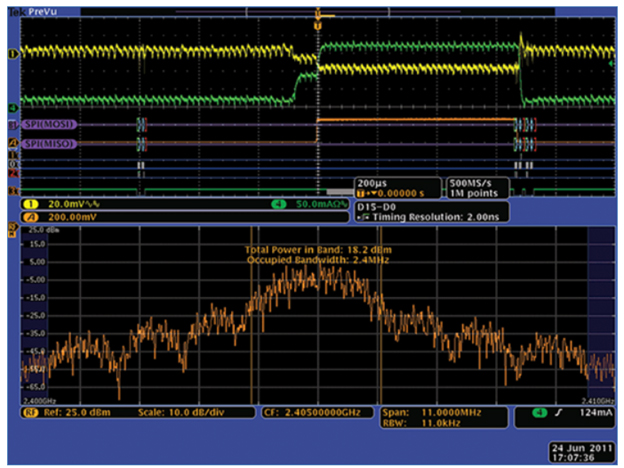
Figure 5: In one display, we can have a time-correlated view of all the radio domains: protocol (digital), analog, and RF. (Source)
- Automated Measurements and Analysis: MSOs have revolutionized signal analysis by incorporating automated measurement capabilities. With the press of a button, you can easily measure critical parameters like rise time, fall time, frequency, period, peak-to-peak voltage, and RMS voltage. These measurements come with statistical data like mean, min/max, and standard deviation, providing a detailed understanding of signal behavior over time. As serial buses become more common in electronic systems, decoding and analyzing protocol-based communication has become vital. Modern mixed signal oscilloscopes (MSOs) now include built-in decoders for protocols like I2C, SPI, CAN, and LIN, converting raw bitstreams into readable formats. Some oscilloscopes also provide event tables that correlate decoded data with waveforms and include search functions to locate specific events. Modern MSOs offer advanced waveform math functions, enabling operations like addition, subtraction, and more. These include integration, differentiation, FFT for frequency domain analysis, and user-defined expressions. Digital filtering further enhances measurement accuracy by isolating specific signals, aiding in system characterization and advanced analysis.
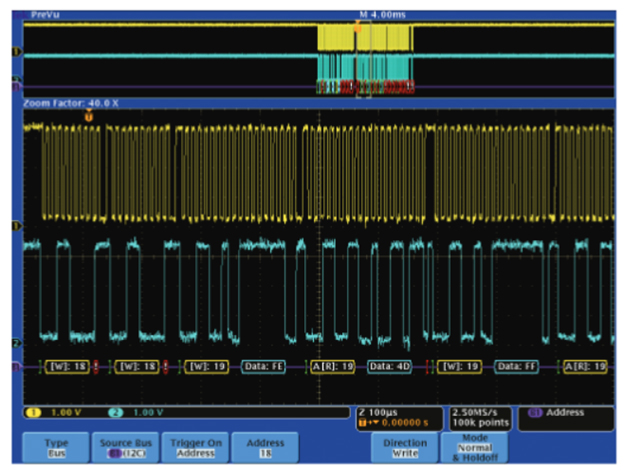
Figure 6: I2C address and data bus waveform decoding (Source)
- Connectivity and Integration: Analyzing measurement results and the ability to document and share this information quickly and frequently is essential. Modern oscilloscopes streamline these tasks by offering enhanced connectivity, providing advanced analysis capabilities and simplifying documentation and results sharing. With standard interfaces such as GPIB, RS-232, USB, Ethernet, and network communication modules, these oscilloscopes provide extensive functionality and are compatible with all types of connectivity. Some advanced models also offer the ability to:
- Create, edit, and share documents directly on the oscilloscope.
- Access network printing and file-sharing resources.
- Use the Windows® desktop.
- Run third-party analysis and documentation software.
- Connect to networks.
- Access the Internet.
- Send and receive emails.
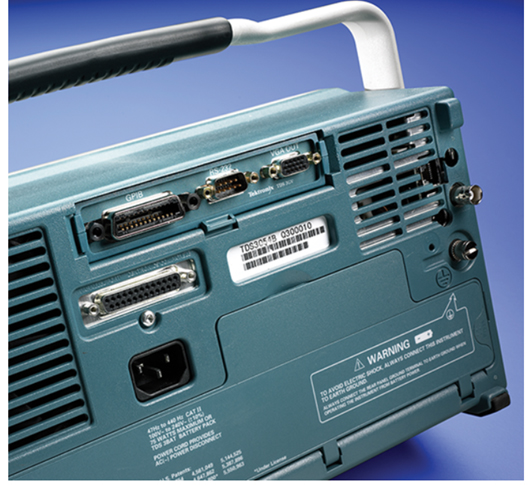
Figure 7: Extensive connectivity with interfaces like Centronics, Ethernet, RS-232, GPIB, VGA, and front-panel USB ports. (Source)
Touchscreen and User Interface: Touchscreen interfaces on modern oscilloscopes enhance user interaction. Large, capacitive touch screens support multi-touch gestures and user-friendly UI designs, significantly improving operational efficiency. These interfaces make navigating menus, adjusting settings, and interacting with waveforms easy. They also support mouse control and remote web control over LAN. The advanced interface technology ensures that all critical controls are just a touch away, allowing users to position, zoom, and interact with waveforms and measurements effortlessly. For example, Keysight’s InfiniiVision 3000T X-series oscilloscope features a user-friendly touch interface and capacitive touch screen, making operation as straightforward as a tablet. It offers three access methods: touch GUI, traditional buttons and knobs, and a Windows-like menu. Additional features include a “touch off” button and USB mouse/keyboard support.
Documentation is simplified with quick annotations, a soft keyboard, a sidebar for extra information, and touch gestures for easy navigation. Built-in USB ports enable seamless PC connectivity, while BenchVue software allows for remote control and automated test sequences, making it easy to export data to Excel, Word, and MATLAB.
Conclusion
DSOs are essential tools for signal analysis in various fields. However, traditional models often need to be more robust to limitations such as restricted bandwidth and sampling rates, inadequate memory depth, and basic triggering capabilities. Modern DSOs address these issues by offering higher bandwidths and sampling rates, improved resolution and precision, and advanced features like multi-domain analysis and automated measurements. These advancements allow for precise and comprehensive signal analysis, making modern DSOs crucial for high-speed digital design, RF and microwave testing, embedded systems debugging, automotive and industrial applications, power analysis, and communication systems. This article explores the unique and advanced features of next-generation DSOs and their transformative impact on signal analysis and engineering efficiency.
As a global distributor, Farnell offers various DSOs to cater to different requirements and ensure high performance across multiple industries.
Stay informed
Keep up to date on the latest information and exclusive offers!
Subscribe now
Thanks for subscribing
Well done! You are now part of an elite group who receive the latest info on products, technologies and applications straight to your inbox.
